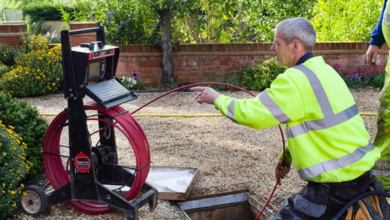How Weather Impacts Roof Damage and Repair Services

Weather is one of the most significant factors affecting the integrity of a roof. From scorching sun to pounding rain, harsh winds to heavy snowfall, the elements can take a toll on any roofing system over time.
Understanding how different weather conditions impact roof damage is crucial for homeowners and roofing professionals alike. In this comprehensive guide, we’ll delve into the various ways weather affects roofs and explore the implications for repair services.
The Impact of Sun Exposure
While often associated with warmth and vitality, the sun can also pose a silent threat to the health of your roof. Its rays, especially ultraviolet (UV) radiation, have the potential to slowly degrade the integrity of roofing materials, resulting in a myriad of problems over time.
Recognizing the impact of sun exposure on your roof is essential for preserving its durability and structural soundness. If you’re facing issues due to sun damage, consider professional roof repair services like those offered by Pyramid Roofing.
UV Radiation and Roof Degradation
Sunlight, specifically ultraviolet (UV) radiation, can cause gradual deterioration of roofing materials over time. Asphalt shingles, for example, are particularly vulnerable to UV exposure, which can lead to color fading, surface degradation, and ultimately, loss of structural integrity.
UV radiation breaks down the molecular bonds in roofing materials, causing them to become brittle and prone to cracking.
Heat and Thermal Expansion
High temperatures can also accelerate the aging process of roofs, especially in regions with intense summer heat.
As roofing materials absorb heat from the sun, they expand, leading to thermal stress on the roof structure. Over time, this thermal cycling can cause materials to warp, crack, or blister, compromising the roof’s ability to provide effective protection.
Solutions and Maintenance
To mitigate the effects of sun exposure, homeowners can opt for roofing materials with built-in UV protection or apply reflective coatings to existing roofs.
Additionally, regular roof inspections and maintenance can help identify and address sun-related damage before it escalates, prolonging the lifespan of the roof.
The Role of Rain and Moisture
Water Intrusion and Roof Leaks
Rainfall is perhaps the most obvious threat to roof integrity, as water intrusion can lead to a host of issues, including roof leaks, mold growth, and structural damage.
Missing or damaged shingles, deteriorated flashing, and clogged gutters can all contribute to water penetration, allowing moisture to seep into the underlying layers of the roof and interior spaces of the home.
Ice Dams and Freeze-Thaw Cycles
In colder climates, the freeze-thaw cycle poses a significant risk to roofs, particularly in the form of ice dams. When snow accumulates on the roof, heat escaping from the attic can cause the bottom layer of snow to melt and refreeze at the eaves, forming ice dams.
These ice dams prevent proper drainage, leading to water backup and potential roof damage. Additionally, the expansion of frozen water within cracks and gaps can exacerbate existing roof issues.
Solutions and Maintenance
Proper roof drainage systems, including gutters, downspouts, and roof slope, are essential for diverting rainwater away from the roof and preventing water pooling. Regular gutter cleaning and maintenance can help prevent blockages and ensure optimal water flow. Additionally, installing ice and water shield membranes along the eaves and valleys can provide an extra layer of protection against ice dam formation.
The Impact of Wind and Storms
Wind Uplift and Roof Damage
Strong winds, especially during storms and hurricanes, can exert significant force on a roof, leading to wind uplift and damage. Wind uplift occurs when air pressure below the roof exceeds that above it, causing roofing materials to lift and detach from the roof deck.
This can result in missing shingles, torn underlayment, and exposed areas susceptible to water infiltration.
Flying Debris and Impact Damage
During severe storms, airborne debris such as tree branches, hailstones, and projectiles can collide with the roof, causing impact damage. This damage may manifest as dents, cracks, or punctures in roofing materials, compromising their ability to provide effective weather protection.
Solutions and Maintenance
To minimize the risk of wind damage, homeowners can invest in impact-resistant roofing materials and ensure proper installation techniques, including the use of wind-resistant fasteners and roofing adhesive.
Regular roof inspections following severe weather events are also essential for identifying and addressing any damage promptly.
Conclusion
Weather plays a significant role in the deterioration of roofs over time, affecting their structural integrity and performance. From sun exposure and thermal cycling to rainwater intrusion and wind damage, various weather elements can contribute to roof degradation and the need for repair services.
By understanding how different weather conditions impact roofs and implementing proactive maintenance measures, homeowners can prolong the lifespan of their roofs and ensure they remain resilient against the elements.
Ultimately, investing in quality materials, professional installation, and routine maintenance is key to protecting one of the most important components of any home: the roof.





